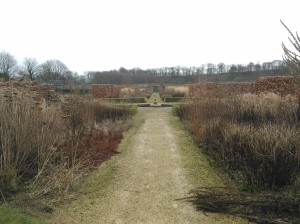On Friday the 2nd of November I was fortunate to attend the 1st annual conference of the Association for Social and Therapeutic Horticulture Practitioners (ASTHP) in Pershore, Worcestershire.
I direct you to ASTHP’s website for further information about their short a long term aims regarding increasing the profile of social and therapeutic horticulture and the creation of a voluntary registration body. http://asthp.org.uk/aim-of-the-association/
The day was focussed on the creation a voluntary registration body for professionals practising social and therapeutic horticulture in England and Wales. It included presentations by Joe Sempik, Rachel Bragg, ASTHP Trustee Jon Fieldhouse and ASTHP Vice-Chair John Cliff.
I thought logically it would make sense to give a brief breakdown of what each of the speakers talked about.
Joe Sempik of Nottingham University – ‘Reflections on a Personal Journey Through a Decade of Change’.
Joe Sempik first came to ‘fame’ in the STH world after completed a research program on STH in 2002 entitled “Growing Together” – http://www.lboro.ac.uk/research/ccfr/growing_together/growingtogetherliteraturereview.htm
In his presentation to the ASTHP he focussed on how STH has changed over the last ten years since Growing Together was published. He demonstrated that a decade ago STH was relying on academic references from Benjamin Rush, Roger Ulrich’s studies on hospitals and green space In recent years the profession has moved on to specific well researched and tested studies are being carried out and STH is becoming a research discipline in its own right.
He also discussed that a recent PhD carried out by Anna A. Adevi entitled ‘Attachment to Certain Natural Environments: A Basis for Choice of Recreational Settings, Activities and Restoration from Stress?’ suggests that people develop an attachment with their natural environments at and early age in a similar way to the body they develop with their mother. This is important in relation to STH as it could mean that engaging children with the natural environment increases their potential for future green interventions, such as STH. http://www.ccsenet.org/journal/index.php/enrr/article/view/12243/9276
This continued quality of research and media exposure is what is required if STH is to influence Government Policy and commissioning services.
Before finishing Joe talked about the educational program around STH currently in practice in the UK. Thrive, in conjunction with the Occupational Therapy Department at Coventry University have now run the Diploma in STH for 17 years.
Rachel Bragg of the University of Essex – ‘Green Care in the Wider Context’.
Rachel’s presentation centred on how STH fits under the umbrella of ‘Green Care’ in the UK. Green Care encompasses therapies that use nature and the outdoor environment to treat and benefit people, such as Care Farming, Wilderness Therapy, Nature therapy and Ecotherapy.
Rachel discussed current and previous research that has been undertaken at the University of Essex and how this is influencing the development of green therapies in the UK.
I cannot do full justice to the work carried out by the University of Essex so I shall refer you to their excellent website which contains a wealth of information: http://www.greenexercise.org/index.html
Jon Fieldhouse of the University of West of England – ‘Know Your History, Shape Your Destiny’.
Jon focussed his presentation on the possibility of STH professional registration, discussing where, when and why the initial conversations about professional registration took place and the potential issues and benefits of creating a professional registering body for England and Wales.
It initial discussions took place between 1997-99 by Thrive’s Professional Development Steering Group. 15 years on we found ourselves at the first annual conference for ASTHP.
Jon highlighted a recent survey of the STH workforce which concluded that 92% want a national STH body, 92% want a register of practitioners, 90% want national ‘lobbying’ and 61% want a protected job title.
The presentation also highlighted the benefits and complications of a registration body demonstrating that is a delicate balance of: validation, not restrictive, quality assurance, regulation, inward/outward facing, representation, autonomy, accountability and being inclusive.
Jon concluded the presentation talking about where STH and health care currently is. That the medicalised notion of health is waning and people are starting to recognise the benefits of alternative treatments and that there are changing purchasing pattens (e.g. people having personalised budgets and choosing a treatment/intervention that works for them).
John Cliff, Growing People and Vice Chair of ASTHP – ‘First Steps to a Voluntary Professional Register’.
The day concluded with a presentation by John Cliff on the subject of the ASTHP creating a voluntary professional registration body for STH practitioners in England and Wales.
John recently attended the annual Canadian Horticultural Therapy Association conference in Vancouver and examined how their professional registration system works compared with that of their American counterparts whilst also examining the policies that the association has in place. John demonstrated the amount of work that has gone into understanding the dynamics of setting up and operating a professional registration body.
On completion of the presentation all those in attendance were asked to group together and complete a questionnaire regarding issues that a professional registering body may encounter and need to address. This obvious prompted some discussion on certain issues but you cannot please everyone all of the time, as someone more famous than me once said.
To Conclude
What is important is that as a profession it feels like we are on the cusp of the next phase of development in STH in the UK now working off a contemporary evidence base and looking realistically at a professional registering body.
ASTHP are currently looking for members (membership is £10 for a year) and people to help with the operation of the organisation, including running regional group meetings of practitioners.
More information about the ASTHP, how to help and how to become a member can be found here: http://asthp.org.uk/






